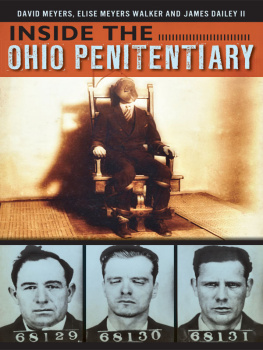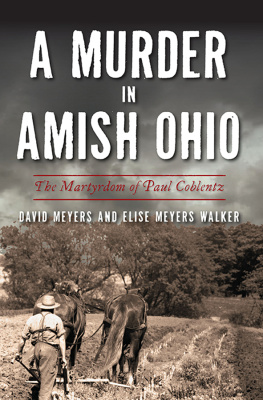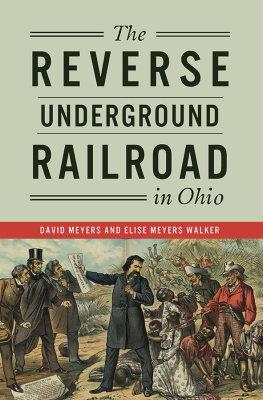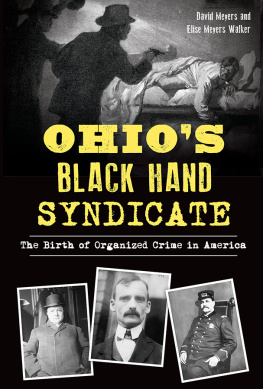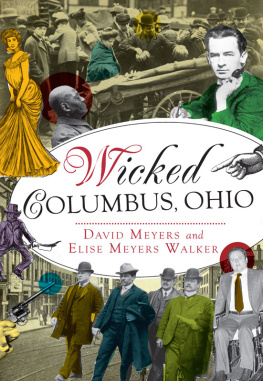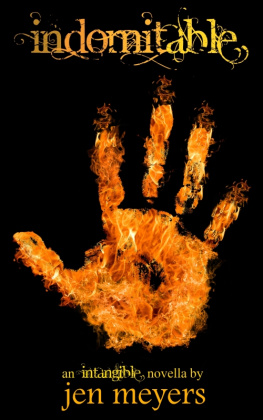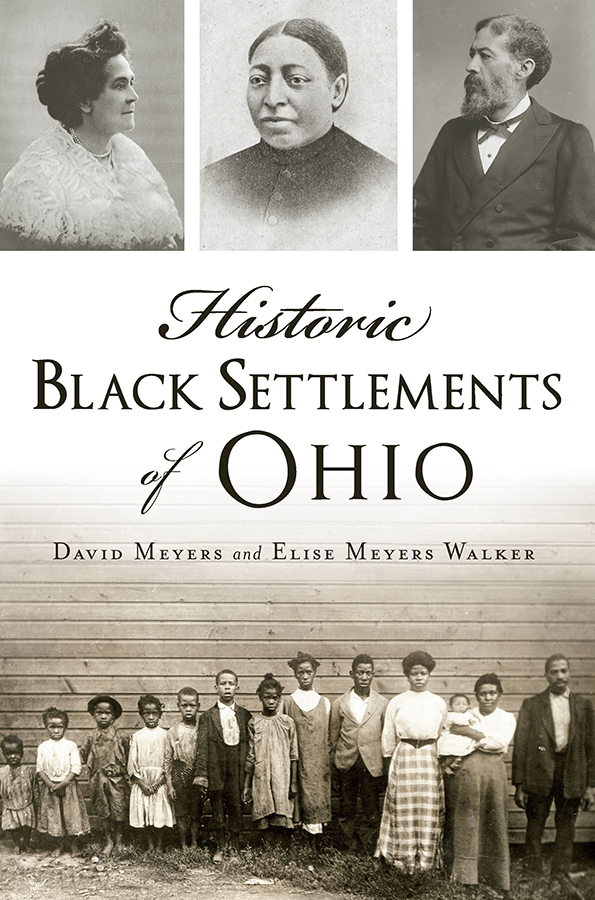
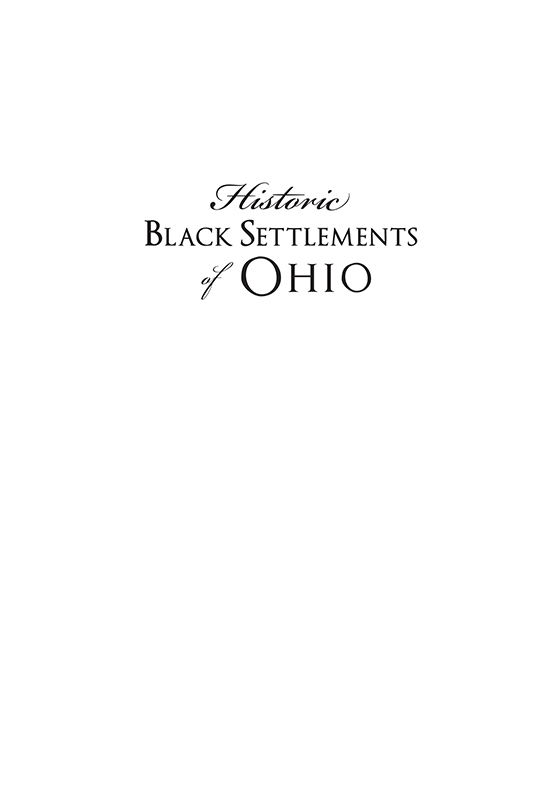

The son of a Randolph slave, Albert McKnight was Piquas unofficial ambassador. Piqua Public Library.

Published by The History Press
Charleston, SC
www.historypress.com
Copyright 2020 by David W. Meyers and Elise Meyers Walker
All rights reserved
First published 2020
e-book edition 2020
ISBN 978.1.43966.895.5
Library of Congress Control Number: 2019951978
print edition ISBN 978.1.46714.418.6
Notice: The information in this book is true and complete to the best of our knowledge. It is offered without guarantee on the part of the authors or The History Press. The authors and The History Press disclaim all liability in connection with the use of this book.
All rights reserved. No part of this book may be reproduced or transmitted in any form whatsoever without prior written permission from the publisher except in the case of brief quotations embodied in critical articles and reviews.
To Frank McCray, Edie Wade, Arnett Howard, Karlton Wilson and Melissa Lamar.
CONTENTS
ACKNOWLEDGEMENTS
Thanks to Sharon R. Watson and Gary Meek of the Piqua Public Library Archives and Special Collections, Randy and Cheryl McNutt, Joyce L. Allig, Dr. Allen Bernard, Jean Miller and Jim Bowsher for their assistance.
INTRODUCTION
I hate the word black; we are not black. My dad would spread his five fingers and tell me to look at his hand. He said that I was like that, a mixture of five bloodsEnglish, Irish, Dutch, Indian and a little bit Negro.
Doris Bowles Venerable, former Carthagena resident
This is the most challenging book weve ever undertaken. In it, we have attempted to write the story of more than forty vanished communities that were occupied by people of color during a period of our history when they werent even fully recognized as people. These Negro settlements, or colonies, as they were often called, were primarily agrarian and generally located in isolated regions. For the most part, they left no records, and archaeological relics are few, save for scattered cemeteries and a handful of buildings. By the early years of the twentieth century, most of the surviving communities had lost their African American identities.
The residents of these settlements were often emancipated or runaway slaves or, more properly, enslaved people. We understand and appreciate the distinction that the term slave is a passive noun that robs the individual of his or her humanity. It was not who or what they were, but a condition imposed on them by someone else. However, because of our need to repeatedly refer to those who were enslaved, you will find that we also use other terms such as slave and former slave with no offense intended.

Former slaves Isaac and Rosa exemplified the absurdity of the one-drop rule. Library of Congress.
The real elephant in the room, though, is how to refer to the race of the individuals. As we have noted in previous books, scientists tend to agree that race is a social construct. Scientific American has asserted, Racial categories are weak proxies for genetic diversity and need to be phased out. Yet American history is primarily the story of racial divisionof white and nonwhiteand it cannot be ignored in the telling. We have, therefore, used the terms black or African American and occasionally colored, N/ negro, mulatto, but always when quoting from contemporary sources.
Throughout the book, we have attempted to identify the most common surnames used by the settlers. Researchers have suggested that 15 to 20 percent of former slaves adopted their most recent masters family name; however, the practice varied widely. For example, some 383 former Randolph slaves were brought to Ohio in 1846, yet the Randolph surname was fairly rare among African Americans. Similarly, Virginian Richard Carter freed 485 slaves in 1791, yet not one Carter descendant had been traced back to this event two hundred years later.
As many as half may have chosen names that were not common among the white population as a whole. Furthermore, as Arthur Thomas has pointed out, Even after a name was chosen, it was often recorded differently at various times due to the low level of literacy and variations in spelling. Goins, Goings, Goens, Goyne and so on are all variations of the same surname. And there are hundreds more.
We suspect that most readers of this book will be surprised to learn that so many black communities were established in Ohio prior to the Civil War. When we set out, we did not know how many there were and still cant say with certainty, but there were more than the ones we have mentioned. The good news is that the conditions that gave rise to these settlements changed. However, we can still see their legacy in the many black neighborhoods that continue to exist in towns and cities throughout the state and the nation. In many respects, we remain a country divided by color.
PROLOGUE
THE RANDOLPH SLAVES
Owing to a common border with the slave states of [West] Virginia and Kentucky, Ohio became a destination for people of color seeking to separate themselves from slavery. Others were brought to the state by their owners and set free. Ohio officials, historian Stephen Middleton wrote, charged slave owners with using the state as a dumpingground for diseased and disabled blacks who were no longer productive. In response, the Ohio General Assembly passed various Black Laws, which were intended to discourage free blacks, not to mention fugitive slaves, from coming to the state or remaining for long.
They were not the firstnor would they be the lastbut the Randolph slaves were the most problematic group of formerly enslaved people to settle in Ohio. And the treatment they were accorded reflected both the best and the worst qualities of the states citizenry.
Ohio was a free state, but only marginally. There were many supporters of slavery living within its bounds, but even those who were opposed to the institution did not necessarily welcome black refugees. An article published by the Columbus Free Press in July 1846 trumpeted, Great excitement in Mercer Countythe importers of the slaves compelled by the people to reship them.
Mercer County was primarily settled by German farmers, along with a mix of English, Irish and Scottish immigrants. In 1845, Judge William Leigh of Virginia authorized the purchase of some land on which to place the slaves who had been freed in the will of John Randolph of Roanoke. As Randolphs executor, Leigh hired Samuel Jay of Miami County to buy land. Jay set about purchasing 3,200 acres in the southern part of Mercer County, where there already was a large black settlement, as well as some property near Celina.
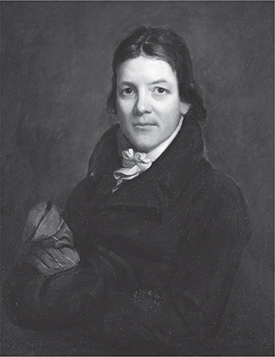
John Randolph of Virginia is often touted as a kindly slave owner. Google Art Project
Next page

